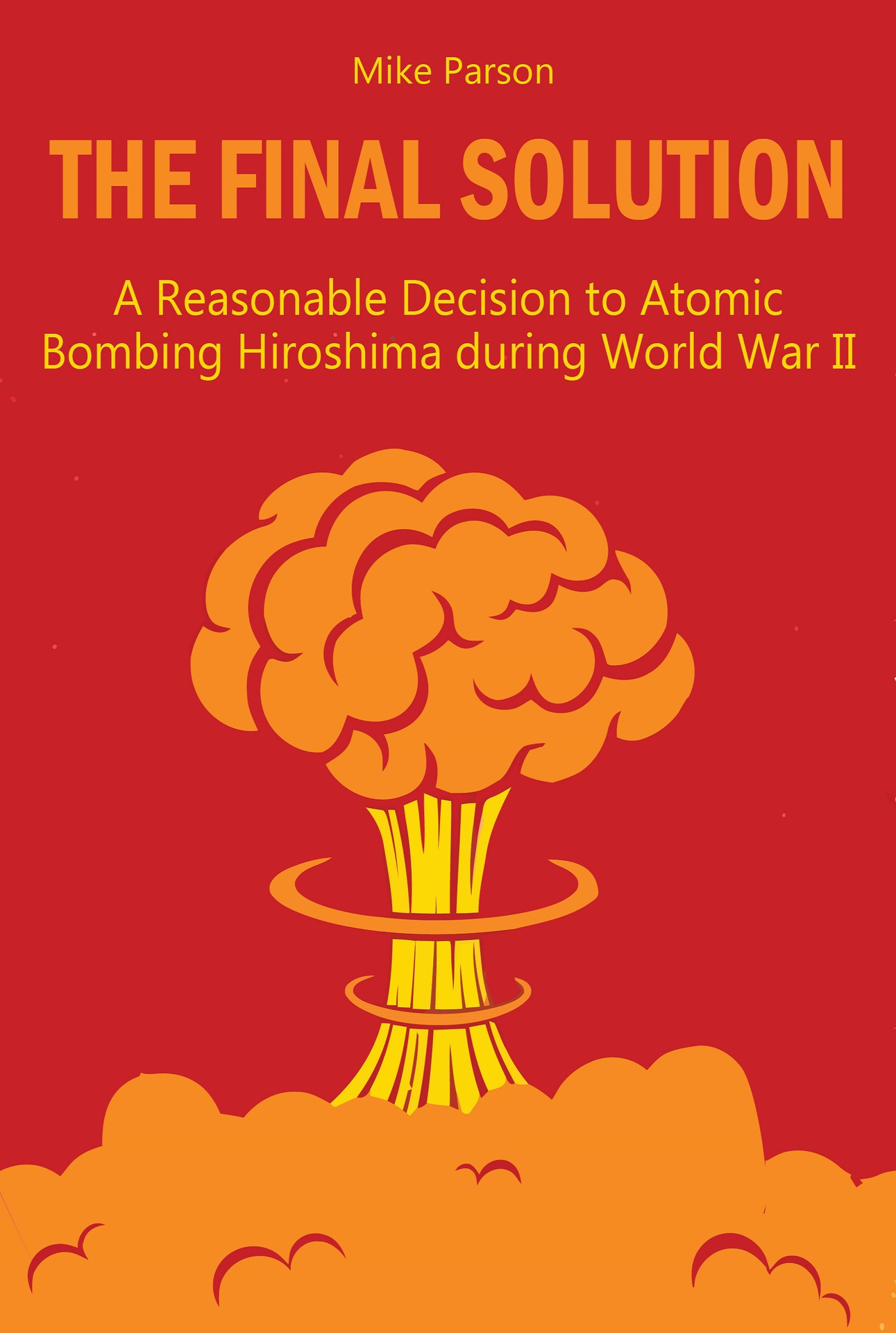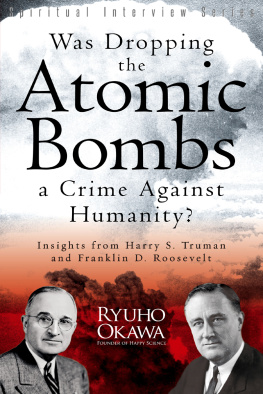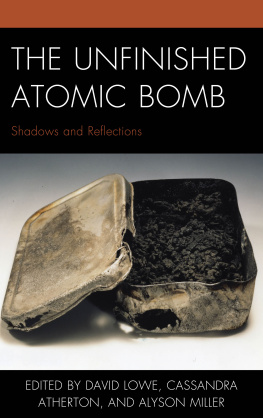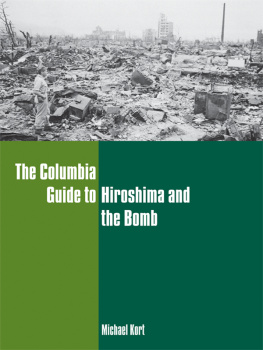THE FINAL SOLUTION
A Reasonable Decision to
Atomic Bombing Hiroshima
during World War II
Mike Parson
Copyright 2020 Mike Parson
All rights reserved
The characters and events portrayed in this book are fictitious. Any similarity to real persons, living or dead, is coincidental and not intended by the author.
No part of this book may be reproduced, or stored in a retrieval system, or transmitted in any form or by any means, electronic, mechanical, photocopying, recording, or otherwise, without express written permission of the publisher.
ISBN-13: 9781234567890
ISBN-10: 1477123456
Cover design by: Art Painter
Library of Congress Control Number: 2018675309
Printed in the United States of America
THE FINAL SOLUTION
A Reasonable Decision to
Atomic Bombing Hiroshima
during World War II
by
Mike Parson
Mike Parson Copyright 2020 - All rights reserved.
The content contained within this book may not be reproduced, duplicated, or transmitted without direct written permission from the author or the publisher.
Under no circumstances will any blame or legal responsibility be held against the publisher, or author, for any damages, reparation, or monetary loss due to the information contained within this book. Either directly or indirectly.
Legal Notice:
This book is copyright protected. This book is only for personal use. You cannot amend, distribute, sell, use, quote,, or paraphrase any part, or the content within this book, without the consent of the author or publisher.
Disclaimer Notice:
Please note the information contained within this document is for educational and entertainment purposes only. All effort has been executed to present accurate, up to date, and reliable, complete information. No warranties of any kind are declared or implied. Readers acknowledge that the author is not engaging in the rendering of legal, financial, medical, or professional advice. The content within this book has been derived from various sources. Please consult a licensed professional before attempting any techniques outlined in this book.
By reading this document, the reader agrees that under no circumstances is the author responsible for any losses, direct or indirect, which are incurred as a result of the use of the information contained within this document, including, but not limited to, errors, omissions, or inaccuracies.
Table of Contents
CHAPTER 1: INTRODUCTION
Nearly 65 years after the United States dropped the atomic bomb on the Japanese city of Hiroshima, that fateful decision continues to be one of the most important and controversial events of the past century. There are obvious reasons for this: it was the first time a nuclear weapon was used in war; a hundred thousand people perished in the attack; it purportedly forced Japan to surrender, thereby ending World War II; and it ushered in the era of nuclear deterrence. The Hiroshima bombing serves as a reminder to all of the consequences of nuclear confrontation. With many more nations nowadays possessing nuclear weapons and the threat of nuclear confrontation real, the annihilation of millions of people and our way of life are at stake.
Today, lingering unease over how the subject of the atomic bombing of Hiroshima should be addressed resulted in President Obamas trip to Japan to be overshadowed by the controversy surrounding his declining an invitation to visit the Peace Memorial in Hiroshima. Along with many Japanese, peace activists worldwide called for Obama to visit Hiroshima as a way to highlight the Presidents call for a world free of nuclear weapons. However, on the eve of the 65th anniversary of the first atomic bombing, no sitting American president has gone to Hiroshima or Nagasaki; similarly, no Japanese prime minister has ever visited or apologized for the surprise attack on Pearl Harbor while in office. Indeed, feelings about the Hiroshima bombing in Japan and the U.S. continue to be shrouded in a controversy involving nationalism, historical writing and interpretation, and assigning responsibility.
It is for these reasons that an analysis of whether the atomic bombing of Hiroshima was a reasonable and just decision is apropos. For absent a deeper understanding of the events of the time and the factors considered in using the atomic bomb, decision-makers today are liable to make errors in judgment that could have enormous consequences. A well-argued viewpoint, no matter the position is taken, provides guidance that may assist decision-makers when they are faced with similar important questions. Even if one may disagree with a particular viewpoint, the arguments raised and the factors considered serve as guideposts that will assist an individual in making a decision deliberately.
With this in mind, the conclusion arrived at here, specifically, that the Hiroshima bombing was a reasonable and just decision, and the lessons learned in this analysis, such as the type of scenarios where the use of nuclear weapons may be permissible, hopefully, may serve as a guide to decision-makers in future grave conflicts.
A Reasonable Decision
The judgments of historians and writers regarding the atomic bombing of Hiroshima can be grouped into two opposing camps: those who believe President Truman made the right choice and those who decry that decision, believing that other options were ignored and the motives presented for dropping the bomb were suspect. In examining whether the atomic bombing was a reasonable decision, this thesis will analyze the important variables and competing interests that President Truman considered and conclude that the atomic bombing was a sensible and rational choice and, therefore, reasonable.
The dictionary definition of the term reasonable includes sensible, rational, governed by reason in acting or thinking, moderate, and fair. Other definitions of reasonable include of having sound judgment, based on good sense, and as much as is appropriate. To help describe the term, one dictionary entry provided the following example: a police officer may use reasonable force to gain entry. Focus ing on this example about evicting a renter who is delinquent on paying rent, a force that may be deemed reasonable to gain entry presumably include all the strength an individual officer can muster to open a locked door, the use of certain devices such as a crowbar to pry open a window, or a battering ram to enter a blocked entrance. On the other hand, however, an officer using his patrol car to crash into a locked front door to gain entry in this instance may likely be deemed heavy-handed and lacking good sense. Using a car to force entry, on its face, certainly appears not to be an action based on reason and sound judgment because using such heavy force, under those circumstances, appears to be much more than appropriate. One could argue that using that much force to evict a renter is illogical because it would likely cause severe damage to the house and possibly physical harm to its occupants. If the aim is the eviction of the delinquent occupants so that the house can be rented again to others, doing severe damage to the house defeats the ultimate purpose of having it available for rent.
In other circumstances, however, such as when a house is on fire and lives are in danger, what we deem to be reasonable actions by a police officer or other first responders change. We appreciate the emergency nature of the situation more and align our thinking and judgment accordingly. To save lives, we would probably view an officer ramming his police car into the garage door of a burning house to gain entry to be a reasonable action. The nature of the situationlives at stakerequires quick and forceful action by the police officer. We make this judgment considering new facts at hand. We do this every day, that is make decisions, both consequential and inconsequential, based on what we are faced with at that particular moment in time. It is a matter of weighing competing interests and making a judgment, under this or a different circumstance, that we will do one thing or another.








